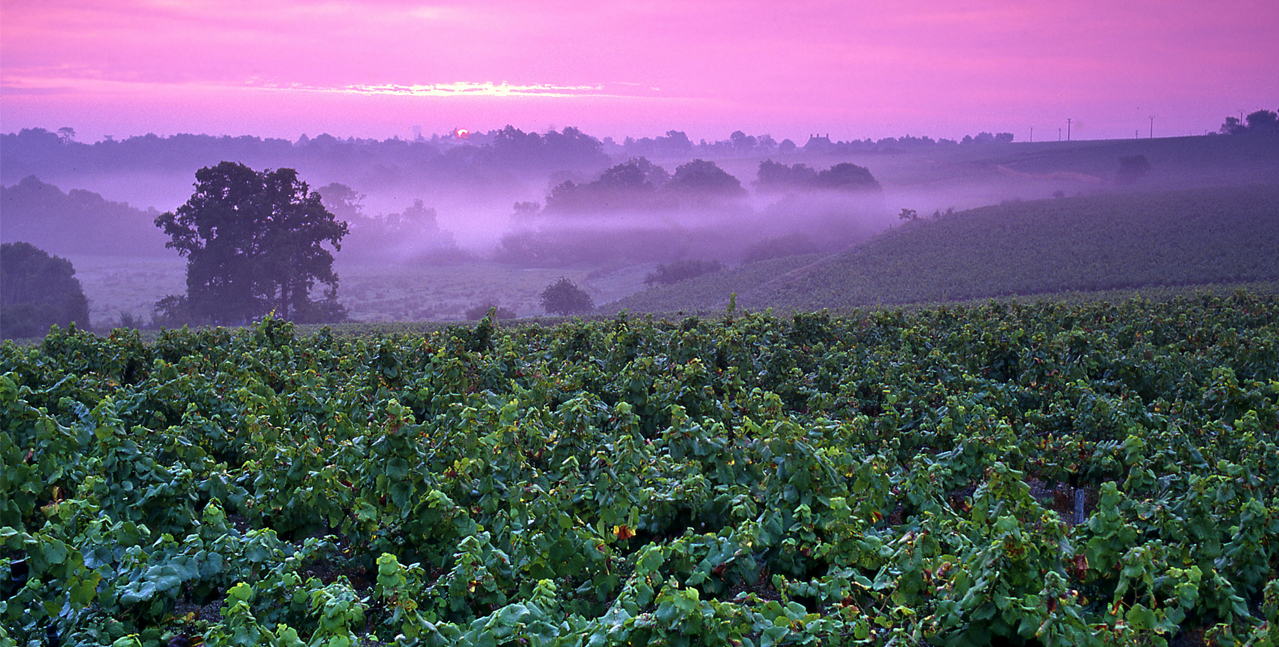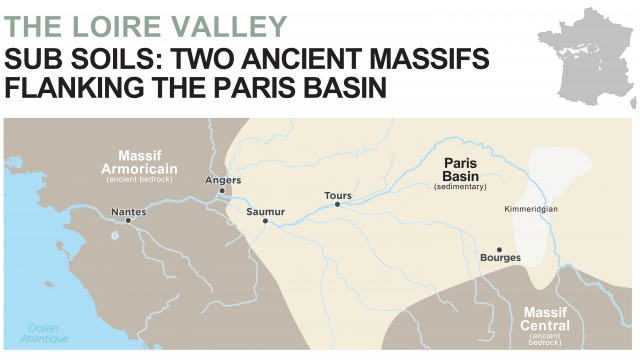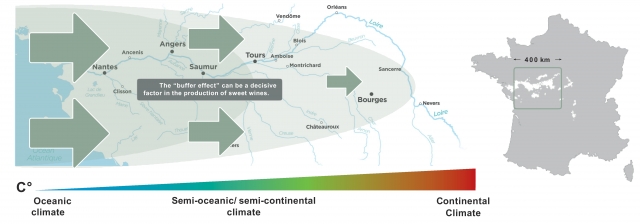
Terroir and climate
Loire Valley wines flourish in a unique cultural landscape, classed as a UNESCO World Heritage site from Chalonnes-sur-Loire (Maine et Loire) to Sully-sur-Loire (Loiret).
With over two thousand years of history, the Loire Valley vineyard area is made up of a mosaic of different climates, soils, geographical features and locations – all of which contribute to the diversity of the Valley’s wines.
Loire Valley Terroirs and AOCs
The earliest references to the concept of terroir appear in mythological texts. Over the centuries, European winegrowers started to improve the ways in which they identified the provenance of their wines – early jar seals, for example, gave precise details about the wine’s origins.
In 1936, French winegrowers devised the Appellation d’Origine Contrôlée (AOC) system; the following year saw the creation of the Institut National des Appellations d’Origine (INAO) to formalise it.
These days, we are experiencing a downturn in wine consumption and fierce competition from abroad; this makes it more important than ever to emphasise the importance of terroir. Only by recognising the value of terroir is the consumer safe from being offered only highly standardised, oenologically perfect wines – with no soul. The one objective of these wines is to be universally acceptable – with no variations from one year to the next or from one place to another.
Terroir-driven wines offer a more emotive tasting experience, as they reflect the inextricable link between soil, climate, varietal – and man’s expertise.
Soils and Subsoils
The Loire Valley vineyards are distinctive for the diversity of their natural environments, a result of the wide range of soils and subsoils present :

- The Pays Nantais is made up of igneous and metamorphic rock from the Massif Armoricain, with chiefly gneiss, mica schists, greenstone and granite.
- In Anjou the subsoil is mainly slate, sandstone and carboniferous schists as well as volcanic rock, all originating from the Massif Armoricain.
- Between Angers and Saumur we see the transition between the older bedrock to the west and the sedimentary basin to the east.
- In the Saumurois and Touraine, the subsoil is made up of tuffeau limestone, sand and siliceous clay from the Paris Basin. The terraces bordering the Loire and the Vienne comprise sand and pebbles, smoothed to roundness by the action of the water and deposited here over the years.
This geological diversity contributes to the presence of a wide range of different soil types, all with varying exposures. This influences both the grape variety grown and the growers’ choice of agricultural practice. It also touches on the idea of terroir, which is so very important in the Loire.

Microclimates
The Loire and its many tributaries have a significant moderating effect on the vineyards. By creating a large range of microclimates all of which promote vine growth, they contribute to the wide diversity of the region’s wines. They also have a buffer effect, which is crucial notably for the production of rich, sweet wines.
- In the Nantes vineyards, oceanic influences temper seasonal variations. Autumns and winters are mild, while summers are hot and often very humid.
- The Anjou vineyards enjoy an oceanic climate with mild winters, hot summers, plenty of sunshine and small variations in temperature. Some of the very dry microclimates promote the growth of Mediterranean plant life.
- In the Saumur vineyards, the hills provide a barrier to winds blowing from the west; the climate becomes semi-oceanic and seasonal variations are more pronounced.
- The vineyards of Touraine are at the crossroads of oceanic and continental influences.





